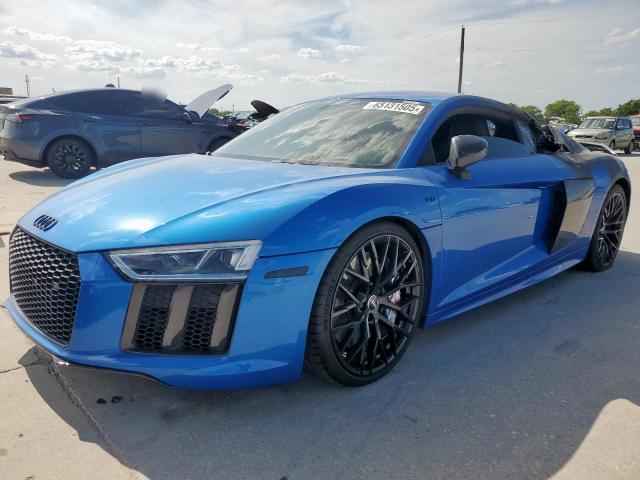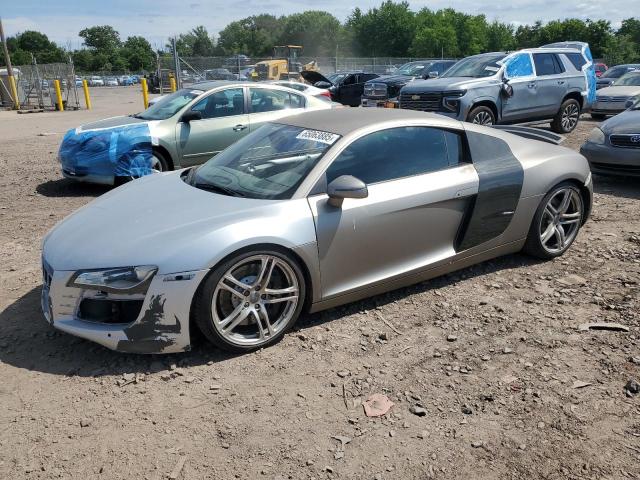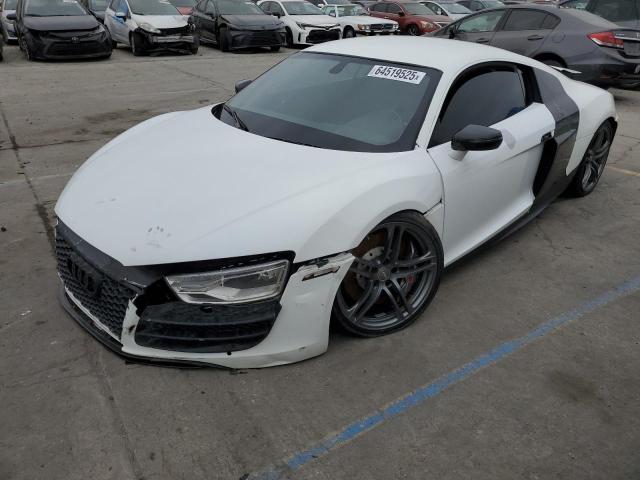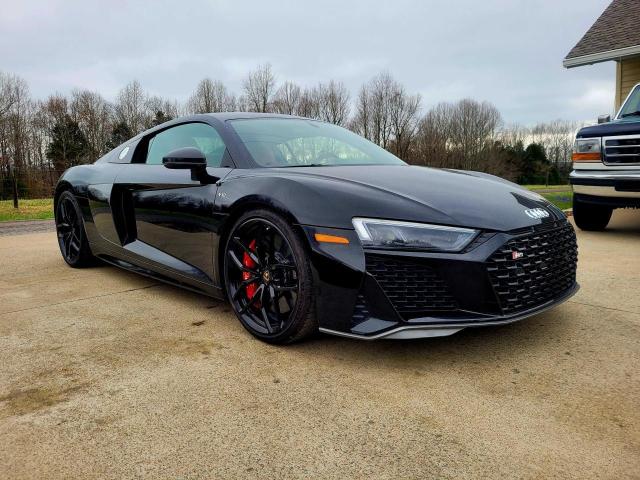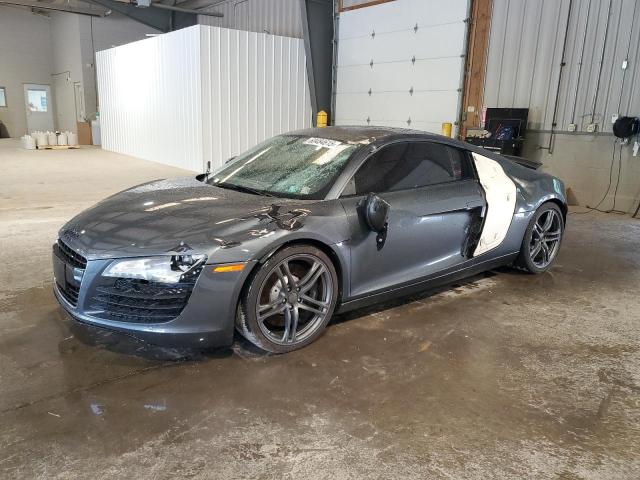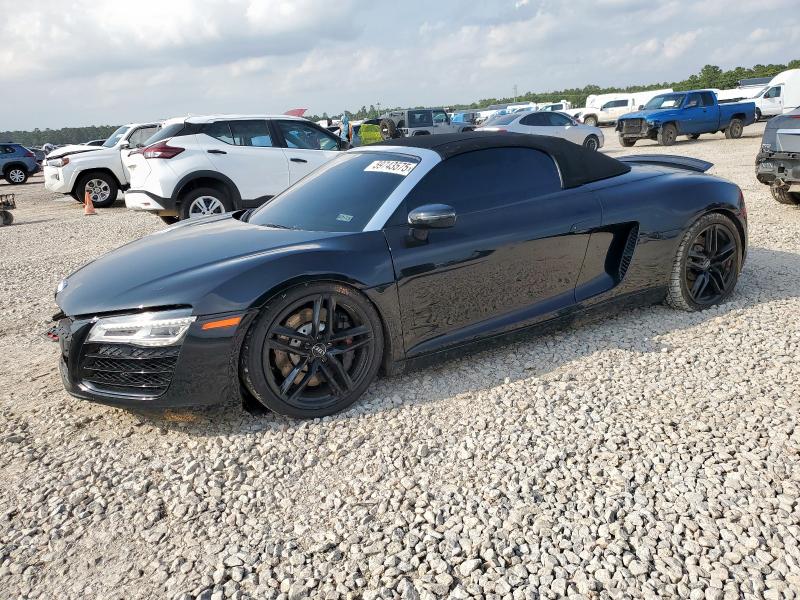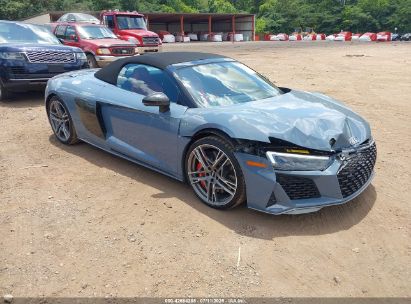2018 AUDI R8 | WUAKBAFX2J7902027
Lot details
- Sale Date2024-12-30
- Lot Number40598230
- ACV124548 $
- Sale documentNon-Repairable (Florida)
- LocationDream Rides (IL)
- Odometer1 miles (2 km)
- Primary DamageFLOOD
- SellerPhiladelphia Insurance Companies
Vehicle specifications
1
~$250,000
Engine: 5.2L naturally aspirated V10
Torque: 565 Nm
0–100 km/h: ~3.4 s
The second-generation Audi R8 represents a purist’s dream in a modern package: mid-engine balance, naturally aspirated V10, dual-clutch transmission, and the option of rear-wheel or quattro all-wheel drive. Unlike many of its turbocharged contemporaries, the R8 retained an emotional, high-revving character, capable of spinning to 8,700 rpm with razor-sharp throttle response and linear power delivery.
The chassis – derived from the Audi Space Frame (ASF) architecture – incorporated lightweight aluminum and carbon fiber for enhanced rigidity and reduced mass. Magnetorheological dampers, ceramic brakes, active aerodynamics, and variable-ratio steering allowed the R8 to behave as a track-ready machine while remaining fully usable on public roads.
Visually, the R8’s wide stance, sideblade intakes, low hood line, and center-exit exhausts emphasized its exotic status. The cabin, though minimalist, focused on the driver — with the Virtual Cockpit replacing traditional displays and optional carbon accents and bucket seats.
Over its lifespan, the 4S-generation R8 stood alone as the last V10-powered supercar in its price range. With production ending in 2024, it concludes an era where naturally aspirated performance and daily usability coexisted in one of Audi Sport’s finest achievements.
Final Bid Audi R8 (2018)
$30,350
$69,662
$118,000
Body Styles
Coupe & Spyder
Model Name Meaning (Manufacturer)
“R8” designates Audi’s ultimate halo vehicle — the only true supercar in its portfolio and a showcase of Audi Sport GmbH’s engineering expertise. Based on the R8 LMS GT3 racecar and the Lamborghini Huracán, the second-generation R8 (2016–2024) improved torsional rigidity, adopted an aluminum-carbon composite chassis (ASF), and used a 7-speed dual-clutch transmission. It retained the naturally aspirated V10 as a defining characteristic, offering a thrilling, linear powerband distinct from the turbocharged competition.
Body & Interior Colors and Rims
The R8 was available in bold finishes like Vegas Yellow, Tango Red, Ara Blue Crystal, Kemora Gray, Ascari Blue Metallic, and Daytona Gray Pearl. Exclusive Audi Sport colors like Ibis White, Suzuka Gray, and Tactical Green gave customers a wide visual spectrum, while the R8 GT introduced matte Suzuka Gray and black badging with race-inspired accents.
The cabin featured monoposto-style driver-focused design, with a Virtual Cockpit replacing traditional gauges, rotary climate controls integrated into the vents, and an abundance of Alcantara, fine Nappa leather, and optional carbon fiber inlays. Red or gray contrast stitching, diamond quilting, and illuminated door sills enhanced personalization. Spyder models came with acoustic soft tops in black or red.
Wheel choices included 19” twin-spoke designs on base trims, up to 20” milled alloys in titanium or gloss anthracite on performance models. Carbon-ceramic brakes with red or gray calipers were available, as were aero kits with splitters, side blades, and GT wings in carbon or gloss black. The R8 GT featured ultralight 20” 10-spoke forged wheels, track-tuned suspension, and GT-specific carbon elements.
Top Expensive Options
- Carbon Ceramic Brakes with Colored Calipers – $9,900
- Diamond-Stitched Fine Nappa Leather Interior – $4,700
- Audi Laser Light with High-Beam Assist – $3,500
- Bang & Olufsen Sound System (13 speakers) – $1,900
- Dynamic Steering with Variable Ratio – $1,500
- Carbon Sigma Sideblades / Mirrors / Inlays – $3,600
- Carbon Fiber Engine Bay & Illuminated Engine Compartment – $2,500
- Sport Exhaust System with Black Finishers – $2,200
- Red Seatbelts / Contrast Stitching Package – $850
- Full Carbon Exterior Package (GT) – $7,000+
vs Competitors
The Audi R8 competed with the Porsche 911 Turbo S, McLaren 570S/600LT, Mercedes-AMG GT R, and Aston Martin Vantage V8/V12. While others may have offered more theatrical looks or edge-of-your-seat rawness, the R8 stood out with its everyday drivability, naturally aspirated V10, and quattro traction (in most versions). The V10 engine gave it a character unmatched by turbocharged rivals, while the dual-clutch S-tronic transmission delivered lightning-fast shifts. For many, the R8 was the most usable supercar, combining German solidity with Italian flair, especially in Spyder form.
Fun Fact
The Audi R8 V10 GT RWD (2023) is the final and most powerful rear-wheel-drive R8 ever produced, marking the end of the V10 era for Audi. Limited to 333 units globally, it features a custom carbon aero package, ultralight forged wheels, and a bespoke torque rear drive mode selector — making it not only the most track-focused R8, but also a collector’s farewell to one of the last naturally aspirated V10s on the planet.


